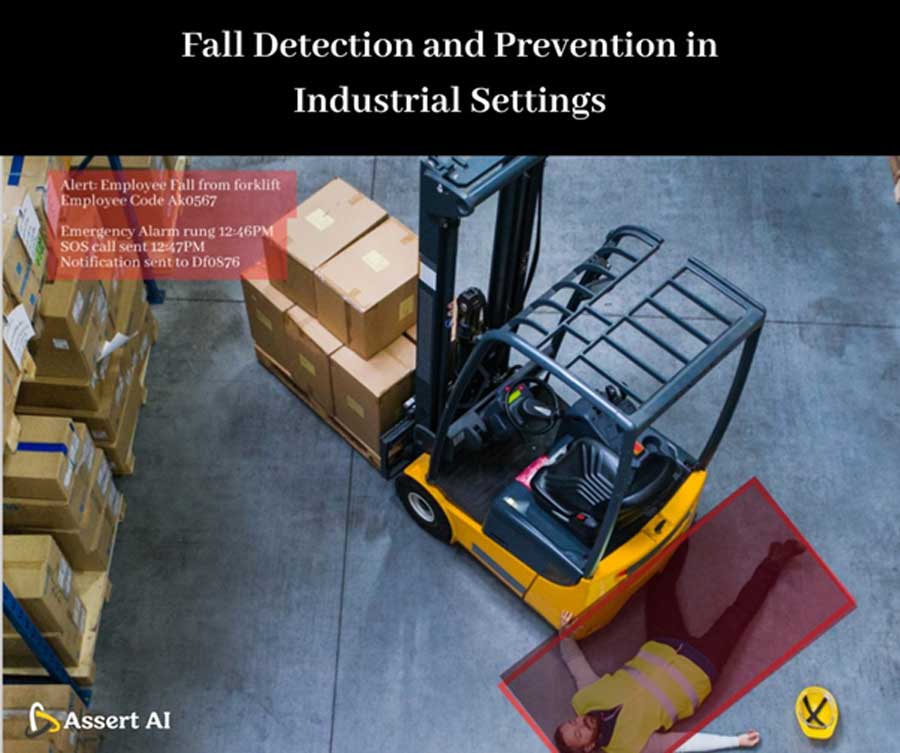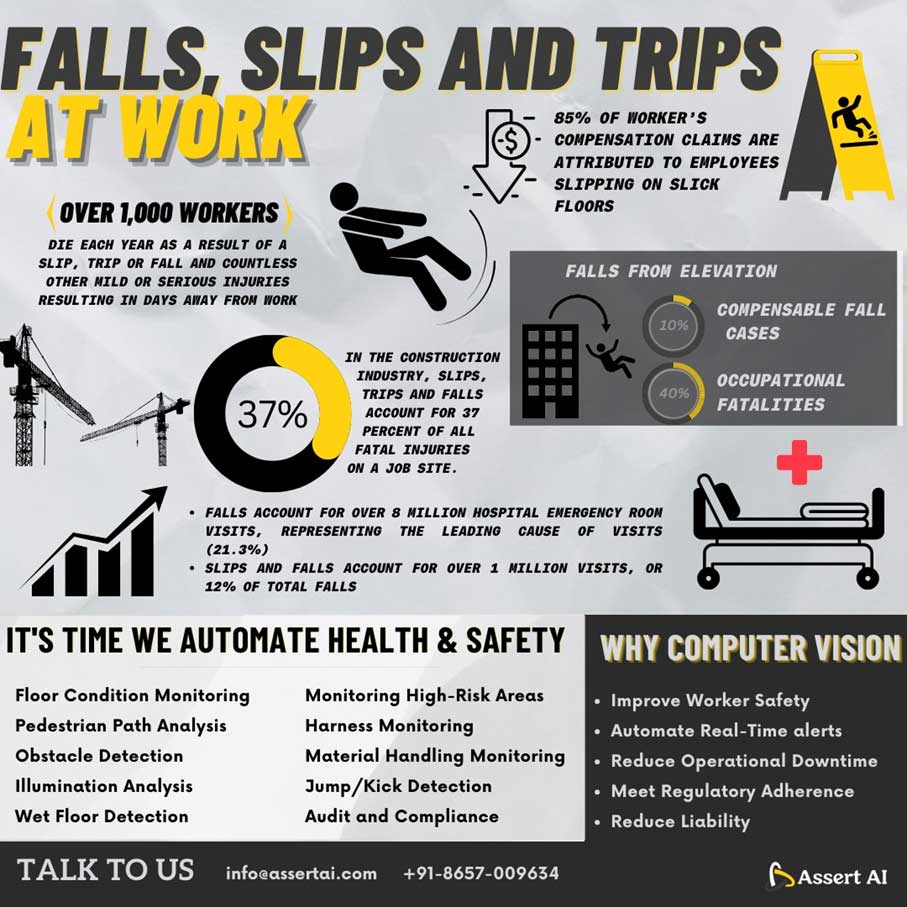
In the intricate realm of worker health and safety, the complete control over fall prevention demands a meticulous approach. Today, we delve into the nuanced landscape of how computer vision, armed with cutting-edge technology, not only detects but actively prevents workplace falls, ushering in a new era of safety protocols.
Navigating Vulnerable Scenarios: A Rigorous Industrial Analysis
Within the dynamic scope of industrial landscapes, vulnerability to falls, slips, and trips is an undeniable reality. Uneven terrains, elusive spills, and suboptimal lighting present tangible challenges. Tasks involving elevated positions, common in manufacturing and construction, amplify the complexity of fall risks.
Confronting the Unpleasant Reality: Workplace Injury Statistics Unveiled

Before unveiling the solution, it’s imperative to confront the stark reality etched in industry statistics. Falls, a significant contributor to occupational injury, not only inflict physical harm but also cast a looming shadow on productivity and collective morale.
Also Watch: Forklift Accidents: Latest Stats and How Computer Vision Can Help!
Key Questions about Fall Detection using Computer Vision:
1. How is fall detection automated using computer vision?
Automated fall detection system utilizing computer vision is a technologically advanced system that employs intelligent algorithms and cameras to continuously monitor workspaces. It swiftly identifies irregular movements or postures that may lead to falls, triggering immediate alerts or safety interventions.
2. How can we prevent industrial falls and injuries?
Industrial falls and injuries prevention entail a proactive approach. Computer vision plays a pivotal role by offering real-time vigilance, identifying potential hazards promptly, and allowing for immediate intervention. This technology goes beyond detection, contributing to a robust safety culture through posture analysis and continuous monitoring.
3. What is the advantage of computer vision?
The advantages of computer vision in fall prevention are multifaceted. It provides real-time monitoring, immediate alerts, and posture analysis, offering a comprehensive solution to mitigate the risk of falls in industrial settings. Its proactive nature and ability to integrate seamlessly into existing systems make it a valuable asset in enhancing overall worker safety.
Harmonizing the Impact in Manufacturing and Warehousing
Indulging in the overture of industry studies, a resounding reduction in workplace falls resonates where computer vision takes centre stage. By pre-empting vulnerabilities with finesse, this technology becomes the virtuoso mitigating the risk of accidents.
Cultivating a Safety Culture in AI-Driven Environments
In the cadence of fall prevention, computer vision’s contribution transcends the realms of mere risk mitigation. It cultivates a culture where employees are acutely aware of their surroundings, and organizations evolve into bastions that champion the sanctity of well-being in AI-driven environments.
The Precision of Safety and Productivity in Industrial Realms
As we navigate the intricate dynamics of workplace safety, the integration of computer vision for fall detection and prevention becomes the crescendo of progress. By addressing vulnerabilities with surgical precision, this technology not only reduces workplace injuries but elevates the ethos of safety to a virtuoso level.
In the pursuit of a secure and productive workspace, computer vision emerges as a maestro, ensuring every step taken within a manufacturing or warehousing environment is a step towards unparalleled safety. Let the symphony of safety commence with precision.
Also Read: Enhancing Workplace Safety: Navigating India’s Occupational Safety, Health, and Working Conditions Code, 2020
